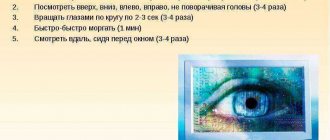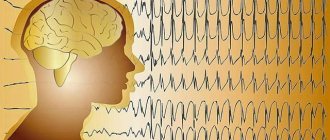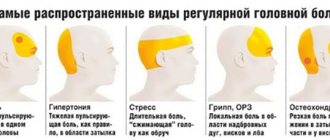Few people know that to correct serious psychological problems, sometimes you need not some complex psychotherapeutic techniques, but means that are quite pleasant to the soul. We are talking about a method that is often used in modern psychological practice - art therapy. Art psychologists claim that after undergoing correction, such activity turns into a favorite leisure activity for many patients.
Art therapy is a method of psychological correction based on the synthesis of art and creativity
What is art therapy
In translation, the concept of “art therapy” is treatment with art (art in English - art, therapeia in Greek - treatment). Art psychology clarifies the term with a definition: this is “creativity treatment,” since the creative essence of a person is actively involved.
Varieties of artistic creativity are used as therapeutic agents: drawing, modeling, music, literature, theater. It has been noticed that with their help you can quickly and easily find a way to resolve intrapersonal and interpersonal conflicts and get out of crisis situations. Creativity is also useful in working with psychological trauma, anxiety, and negative behavioral reactions: anger, aggression, and anxiety.
Features of art therapy
The main feature of art therapy and at the same time its difference from other techniques is the use of metaphor, that is, the transfer of the properties of one object to another. The brief essence of the art therapy metaphor is that the patient, in a special way (for example, by drawing or sculpting) creates an image similar to his problem and works with it.
Art therapy for preschool children - what is it?
Another feature is that in addition to traditional visual means, types of pantomime, dance, masquerade, and fairy tales are used for metaphor.
For your information. In art psychology, it is believed that healing through art is based on the unconscious (lack of control over information by the conscious mind). Information is stored in the form of images and metaphors with their own emotional coloring. To solve a psychological problem, it is enough to find a suitable image in the unconscious, create a metaphor and bring it to the level of awareness. Next, work through negative emotions and evoke insight, that is, insight.
Art therapy treatment relies on images of the unconscious
Psychotherapy methods
Modern psychotherapeutic practice uses a number of methods and approaches of psychocorrection, starting with the classical ones:
- rational therapy;
- behavioral therapy;
- classical transactional analysis.
Examples of the most modern, innovative techniques are:
- family psychotherapy;
- integrative transactional analysis.
Classification of psychotherapeutic techniques:
- integrative transactional analysis;
- techniques of classical hypnosis;
- client-centered therapy according to K. Rogers;
- rational psychotherapy;
- psychotherapy with a cognitive-behavioral direction;
- use of Socratic dialogue technique;
- Gestalt therapy;
- meditative breathing techniques.
The whole variety of psychotherapeutic techniques is successfully used within various approaches to psychotherapy. Thus, the personal approach implies the perception of the person seeking help as a single, holistic personality, taking into account all its characteristics and has three main directions:
- studying the client’s personality, its specifics, development and occurrence of disorders in order to optimize psychotherapeutic influences;
- taking into account personality characteristics when using any psychotherapeutic techniques;
- orientation of psychotherapeutic influence on personality change.
An individual approach is similar to a personal one, but may have a more limited scope, for example, when it is necessary to take into account only certain personal or somatic characteristics of the patient.
The behavioral (behavioral) approach consists of correcting unwanted behavioral stereotypes. The specialist analyzes the patient’s behavioral reactions in detail, then analyzes the factors that trigger the undesirable symptom. After this, together with the patient, a step-by-step action plan is drawn up to change or eliminate these factors and consolidate the changed behavior. The approach is clearly prescriptive.
Cognitive - based on the idea that the mechanisms of the occurrence of problems and the formation of symptoms are determined by the patient’s mental activity and the internal organization of mental processes. The task of a psychotherapist is to change the response to external circumstances by reprogramming thinking.
Theoretical basis
Life values - what are they, definition
Art psychology recognizes that initially correction by art was based on the psychoanalytic theories of famous scientists: S. Freud and C. G. Jung. In their opinion, the finished result of creativity (drawing, sculpture, installation) reveals the unconscious mental states of the individual. Therefore, art psychological concepts can be defined from the perspective of psychoanalysis.
There is an opinion that the technique itself and its name were invented by the artist Adrian Hill. He taught drawing to patients with tuberculosis and noticed that practicing fine arts distracted them from their worries, thereby having a healing effect. In particular, the patient was freed from signs of mental disorder and anxiety through drawing.
At the same time, art therapeutic techniques began to be used in education, as teachers noticed that the more a child engages in artistic creativity, the more noticeable the progress in his cognitive and emotional development becomes.
Family-systemic constellations: theater of domestic problems
Family-system constellations are somewhat reminiscent of psychodrama, but in this case all the roles are alternately played by the same person. He also shows the group members who help him what to do. During the process, “deputies” convey what is happening in the family system, based on the information offered by the main character.
The author of the constellation method is the German psychotherapist and philosopher Bert Antoine Hellinger, born in 1925. He argues that most of a person's psychological problems stem from problems in his family system - the circle of relatives and people of equal importance to them. Hellinger lists such problems as murder, suicide, early death, rape, immigration, loss of property, breakdown of family relationships, and so on. According to the philosopher, they, as a rule, become the cause of psychological trauma, conflicts, psychosomatic and other diseases. To resolve a conflict or problem, Hellinger suggests working through it in action. Experts also recommend visiting a therapist of a different profile after a constellation session to assimilate the experience gained.
Basic Concepts of Art Healing
Subconscious - what is it, definition
Creativity in treatment is both a leading method and performs an auxiliary function. Therefore, modern art therapy is considered on the basis of two leading concepts:
- Art, through a veiled metaphor, helps to recreate a traumatic situation and seek its resolution through the transformation of the personality itself. For example, creativity is an effective means of working with fear that arises due to intrapersonal conflict.
- When getting acquainted with a complex of finished works of art (paintings, sculptures, photographs), the patient is taught the ability to understand his own inner world and track his feelings.
Goals and Benefits
Art therapists explain why they are attracted to this method of psychological assistance:
- The technique can be prescribed to almost all patients, regardless of their age and condition; even pregnant women, such treatment is not contraindicated.
- You can find an acceptable approach to many psychological problems; the technique is effective even with aggressiveness, anger, and anxiety.
- I am attracted by the simplicity and safety of the technique; it does not cause discomfort in the communication between the patient and the art therapist.
- The process of psychotherapy is optimized when, with the help of an image, it is easier for the patient to express internal conflicts and unconscious experiences.
- Nonverbal methods activate the manifestation of those feelings that the individual is accustomed to suppressing.
The unique features of art therapy are used in many areas of domestic psychotherapy
The conclusion of art psychologists on the advantages of the method: patients can work with their own subconscious not only during a session, but also independently. With its natural form of manifestation of emotional states, art therapy easily turns into a hobby.
For your information. Today, art treatment technologies are well developed, and no contraindications have been identified. They are recognized by many areas of domestic psychotherapy and approved by international practice. The main goal of an art therapist is to provide the patient with the opportunity to understand their inner world through creativity.
Types of therapeutic techniques
From the point of view of classical art therapy, for treatment with art, those types of art that were present initially are sufficient: painting, graphics, modeling. However, modern practice uses many more types of therapeutic techniques: photography, bibliotherapy, masks, fairy tales, music therapy, their number is constantly growing.
A complex remedy is becoming popular - art synthesis therapy, as a combination of painting, poetry, drama, rhetoric and plastic arts.
Isotherapy
Of all types, isotherapy, that is, correction by drawing, is the most famous. It is widely used in working with preschoolers to study their psycho-emotional state. Drawing tests are popular among preschool psychologists and pre-school teachers: “Draw your family”, “Non-existent animal”, “My fears”, which enable adults to identify children’s problems, and children to delve into their own feelings and experiences.
Isotherapy is effective when working with psychological problems of people of all ages
Isotherapy for adult patients is used to identify and correct psychosomatic disorders, difficulties in family and social communication. Art therapists usually use both classical (regular drawing) and modern technologies:
- Image on wet paper;
- Drawing on transparent glass - monotypes;
- Blowing paint onto paper through a tube;
- Collage - gluing materials of different textures and colors: newspapers, glossy magazines, natural materials.
Phototherapy
Treatment with phototherapy is an affordable modern remedy. Art therapists include both ready-made photographs and original author’s photographs in their work. The main content of the technique is the creation, perception and discussion with the patient of a metaphor through a photographic image. This type of art therapy is welcomed among teenagers, as it matches their interests in various gadgets.
Music therapy
Music therapy is represented by a system of musical works that effectively influence the maintenance of human mental health. This is a rather complex type of art therapy, since it requires a strict selection of works that help the patient enter into a certain image for self-knowledge. Music therapy is carried out individually and in groups. Group is even preferable, as it gives the opportunity to influence well-being by discussing a piece of music from different positions.
Fairy tale therapy
Fairytale therapy is a universal type of art therapy, successfully used in work with both children and adults. It is indispensable in pedagogy not only as a means of instilling moral qualities, but also for correcting psychological deviations. If any problem is identified, the art therapist discusses with the child a suitable fairy tale plot or encourages improvisation. Most often, fairy tale therapy is carried out in a group so that common age-related problems can be discussed with all children.
Fairytale therapy helps identify and correct psychological problems in children and adults
Exercises for adults
At the moment, there are many techniques and exercises known that have proven effective in working with adults and teenage children. Here is an example of some of them:
- In the “Avatar” exercise, the goal is to create conditions for self-knowledge, since a person often makes mistakes without understanding himself, his desires, strengths and weaknesses. You need to find an image that maximally reflects the inner world of the individual and draw it. At first, the drawing may be schematic, the main thing is that it reflects the internal state.
- The task of drawing an “Image of Goal” is useful for adolescence and youth, as it allows you to identify the purpose of your life and adjust your life guidelines. There is no need to be afraid of the inability to draw, you can just scribble, gradually the scribbles will form a meaningful drawing.
- An interesting exercise “Life is like a road” helps to reconsider and adjust a person’s life guidelines. The patient is encouraged to draw the road of life as he imagines it, with potholes and potholes, straight or winding, to reflect the places through which it passes. Then the art psychologist suggests thinking about the drawing and answering for yourself whether you are happy with the path you are taking, whether it makes sense to turn off. If desired, you can change the drawing by adding elements of the future.
Exercises for children
For a child, creativity is useful because it allows one to express those experiences that are difficult to express in words. It is enough for an art therapist to see the color, the nature of the lines, the image of the figures in order to understand the child’s mood, look into his inner world, and determine the presence of fear and anxiety. With the help of creativity, you can correct some problems and improve the baby’s well-being. Sample exercises that can be offered to children:
- In the “Flower” exercise, you need to close your eyes and imagine the most beautiful flower that the baby knows. Then questions are asked about the appearance of the flower and where it grows. This metaphor involves revealing the child’s inner world.
- Exercise “My Mood” helps to study the internal state of a small patient. The art psychologist suggests that he close his eyes, breathe correctly to focus on internal sensations, then draw his mood. During the discussion, it becomes clear whether the child likes his drawn image, what it evokes: peace, fun or anxiety, fear. This will make it possible to correct the child’s problem.
It’s easy to track a child’s emotional experiences from his drawings.
Concluding that art treatment is unique, we can say that art therapy is one of the best psychotherapeutic means, which unobtrusively encourages a person to identify and solve complex problems, and shows different options for solving a problem. Its main benefit is that it reveals a person’s creative abilities, helping to survive difficult periods of life.
Psychoanalysis: Free Associations
Psychoanalysis is one of the oldest, but not outdated, areas of psychotherapy. It appeared more than 100 years ago and was originally used to treat neuroses. Psychoanalysis is based on the cathartic method of Joseph Breuer (Breuer), who used hypnosis in his work, which allowed patients, in the form of a conversation with a doctor, to restore lost memories or impressions and solve problems associated with them. Sigmund Freud became the co-author of this method and at first also resorted to hypnosis. He later abandoned this technique, and this marked the beginning of the formation of psychoanalysis as a method.
Psychoanalysis refers to conversational therapy methods. Its main goal is to help the client answer the following questions:
• what's happening?
• Why is this happening?
• what to do?
This allows a person to become aware of parts of the psyche that previously lay in the unconscious - and this is why psychoanalysis is sometimes also called depth psychology. Instead of hypnosis, the method of free association is used in this case, so that during the session the client can say whatever comes to his mind. The psychotherapist’s task here is to create a situation of safety and trust in which the person who comes to him can relax. An important condition, as in the case of any other psychotherapy, is the absence of friendly or family ties between the therapist and his client. In addition, as in other fields, the specialist is obliged to keep secret everything that is communicated to him, so that free associations do not extend beyond the confines of the office in which they are heard. You need to understand that a therapist who uses hypnosis in his practice and calls himself a psychoanalyst actually practices a different method: including Breuer’s cathartic method. Psychologists have no right to use hypnosis. After all, psychology and psychotherapy are not the same thing. The status in this case depends on the specialist’s education. A psychologist is a person who has received a psychological education (and even a clinical psychologist with a medical school diploma is neither a psychotherapist nor a doctor). A psychotherapist is a psychologist or doctor who has continued his education, received specialization or undergone retraining, and received the right to practice psychotherapy.
Psychoanalysis is a proven progressive method that gives a person the opportunity to deeply work through problematic issues and long-standing psychological traumas or, for example, change the style of communication. True, in this case you need to prepare for long-term work: a short period is considered to be a year and a half, and an average period is about seven years.











